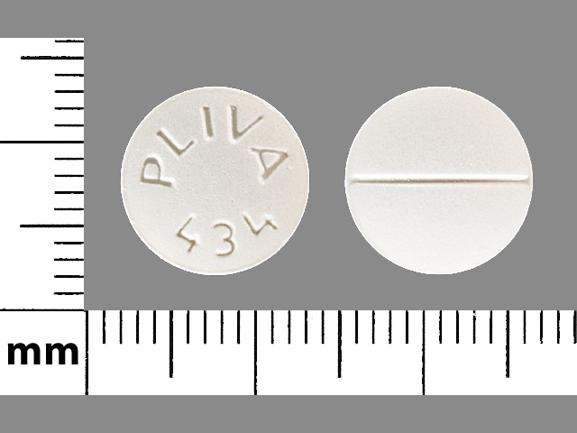Trazodone’s off-label uses are wide-ranging, mainly due to its complex pharmacology. It is primarily an antidepressant but has notable sedative and anxiolytic properties, leading to its use in various conditions beyond depression.
Below is a detailed breakdown of its off-label uses, including its mechanism of action for each.
1. Insomnia
- Mechanism: Trazodone’s strong sedative effect stems from its antagonism of histamine H1 receptors and alpha-1 adrenergic receptors, which promote sleep by reducing arousal and calming the central nervous system. Its ability to modulate serotonin also helps improve sleep quality.
- Use: It is commonly prescribed in low doses (50–100 mg) for insomnia, compared to the higher doses used for depression. It can help both sleep initiation and maintenance.
2. Anxiety Disorders
- Mechanism: Trazodone inhibits the reuptake of serotonin by blocking the serotonin transporter (SERT), increasing serotonin availability. In addition, it acts as a 5-HT2A receptor antagonist, which has anxiolytic effects. This combination can help reduce anxiety by modulating serotonin pathways linked to mood regulation.
- Use: Off-label for generalized anxiety disorder (GAD), panic disorder, and social anxiety disorder, trazodone helps manage anxiety symptoms without causing significant dependence, unlike benzodiazepines.
3. Chronic Pain More Detail …
- Mechanism: Trazodone’s pain-relieving effects come from its modulation of serotonin levels, which plays a role in pain perception. By antagonizing 5-HT2A receptors and mildly affecting noradrenaline reuptake, trazodone can reduce chronic pain symptoms. Furthermore, by improving sleep, it alleviates some pain related to fibromyalgia and neuropathic pain.
- Use: It is sometimes prescribed to manage pain conditions like fibromyalgia, neuropathic pain, and lower back pain, particularly when these conditions are associated with poor sleep quality.
4. Post-Traumatic Stress Disorder (PTSD)
- Mechanism: In PTSD, trazodone’s ability to improve sleep by antagonizing H1 histamine receptors and alpha-1 adrenergic receptors plays a key role. Its serotonin-boosting effect also helps to manage the emotional dysregulation and anxiety associated with PTSD.
- Use: Trazodone is used off-label to treat insomnia, nightmares, and hyperarousal in PTSD. It can improve overall sleep quality and reduce trauma-related nightmares by calming the central nervous system.
5. Migraines and Tension Headaches
- Mechanism: Trazodone affects both serotonin and noradrenaline pathways, both of which are implicated in migraine and headache pathophysiology. By increasing serotonin levels and blocking serotonin 5-HT2A receptors, it can reduce the frequency and intensity of headaches.
- Use: Trazodone may be used as a preventive treatment for chronic tension headaches and migraines, especially when sleep disturbance or anxiety is a contributing factor.
6. Alcohol Dependence and Withdrawal
- Mechanism: Trazodone helps by regulating serotonin levels, which are often disrupted in individuals with alcohol dependence. It also has sedative properties that can alleviate withdrawal-related insomnia and anxiety.
- Use: It is prescribed off-label to manage symptoms of alcohol withdrawal such as insomnia, anxiety, and mood disturbances. While not addressing cravings, it helps patients maintain sobriety by improving sleep and reducing withdrawal discomfort.
7. Agitation in Dementia
- Mechanism: In patients with dementia, trazodone’s sedative effects (via histamine and alpha-1 adrenergic receptor antagonism) can reduce agitation. Its serotonin-modulating effects may help stabilize mood and reduce aggression.
- Use: Off-label for agitation, aggression, and restlessness in patients with Alzheimer’s disease and other dementias. It is considered an alternative to antipsychotic medications, though with varying efficacy.
8. Attention Deficit Hyperactivity Disorder (ADHD)
- Mechanism: Trazodone’s sedative effects help counteract the hyperactivity and impulsivity that are hallmark symptoms of ADHD, particularly at bedtime. Its serotonin-modulating properties may also help regulate mood and impulsivity.
- Use: Though not a primary treatment for ADHD, it is sometimes used off-label to manage sleep disturbances or impulsive behavior, particularly in adults or those with comorbid anxiety or insomnia.
9. Obsessive-Compulsive Disorder (OCD)
- Mechanism: Serotonin dysregulation plays a central role in OCD. By inhibiting serotonin reuptake and antagonizing 5-HT2A receptors, trazodone may help reduce compulsions and obsessive thoughts.
- Use: Trazodone is sometimes used off-label as an adjunctive treatment in OCD, particularly when patients have comorbid insomnia or depression, although selective serotonin reuptake inhibitors (SSRIs) are usually the first-line treatment.
10. Bipolar Disorder (as a Sleep Aid)
- Mechanism: Trazodone’s sedative effects make it useful for treating the insomnia often seen in bipolar disorder, especially during depressive episodes. However, its use must be carefully monitored, as increasing serotonin can potentially trigger mania in bipolar patients.
- Use: It is prescribed off-label to improve sleep quality in bipolar disorder, particularly during depressive phases, though mood stabilizers are still the mainstay treatment.
Summary of Mechanism
Trazodone’s off-label uses stem from its ability to affect multiple neurotransmitter systems:
- Serotonin: As a serotonin antagonist and reuptake inhibitor, it modulates mood, anxiety, and pain perception.
- Histamine: Antagonism at H1 receptors contributes to its strong sedative properties, useful for treating insomnia.
- Adrenergic: Blocking alpha-1 adrenergic receptors helps to reduce anxiety, lower blood pressure, and improve sleep by decreasing sympathetic nervous system activity.
While effective for many off-label uses, trazodone’s side effects, such as drowsiness, hypotension, and the risk of serotonin syndrome, necessitate careful dosing and monitoring, especially when used in combination with other serotonergic or CNS-active drugs.

